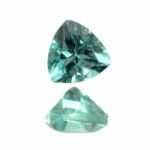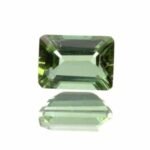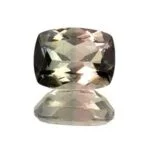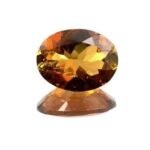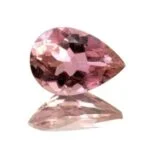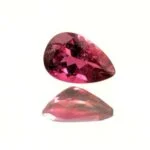Tourmaline: The Rainbow Gemstone of October
Introduction
Tourmaline, celebrated as October’s birthstone, is a captivating gemstone renowned for its vast spectrum of colors, arguably more than any other gem. Its name is derived from the Sinhalese word “turmali,” translating to “more colors.” Ancient tales narrate that tourmaline embraced every hue of the rainbow during its journey along one, giving it its diverse palette. Historically, royalty has been captivated by this gem, often showcasing its unique shades. Intriguingly, tourmaline can exhibit bi-colored or even tri-colored patterns, with the “watermelon” variety being especially notable for its green exterior and pink core.
Geological Occurrence
Tourmaline is predominantly discovered in granite pegmatites and the rocks they inhabit, with the pegmatite variants typically showcasing a black hue. Its resilience and specific gravity also lead to its presence in eluvial and alluvial deposits. Additionally, tourmaline has been identified within hydrothermal quartz veins.
Composition and Varieties
Tourmaline is a complex gem, classified as an aluminum borosilicate. It encompasses eleven distinct mineral species based on its chemical composition: buergerite, chromdravite, dravite, elbaite, feruvite, foitite, liddicoatite, olenite, povondraite, schorl, and uvite. The vibrant colors of tourmaline arise from the integration of metal ions (including Fe, Mn, Cr, V, Ti, and Cu) within its crystalline structure. Specific shades have earned their own names, with “indicolite” denoting blue tourmaline and “rubellite” signifying the deep pink-red variant. Among these, the rich blue and rubellite tourmalines command the highest value.
Origins
The allure of tourmaline has led to its mining in various parts of the world. Notable sources include regions in Africa, Afghanistan, Australia, Brazil, Kenya, Madagascar, Mozambique, Nigeria, Pakistan, Siberia, Sri Lanka, Tanzania, the United States, and Zimbabwe.
Properties and Care
Tourmaline boasts a durability rating of 7 – 7.5 on the Mohs scale, making it relatively resistant to scratches and suitable for various jewelry settings.
Enhancements and Treatments
To enhance its natural beauty, tourmaline sometimes undergoes heat treatment. This process can lighten overly dark specimens or intensify the color of pale pink and white tourmalines, transforming them into richer pink shades. For instance, a dark gray or steel-colored tourmaline might be treated to achieve a minty green or neon blue hue.
Lab-Created and Simulants
While there is no lab-created version of tourmaline available currently, there are simulants that mimic its appearance. Commonly used substitutes include lab-created spinel and quartz, which can resemble tourmaline but lack its unique properties and charm.

